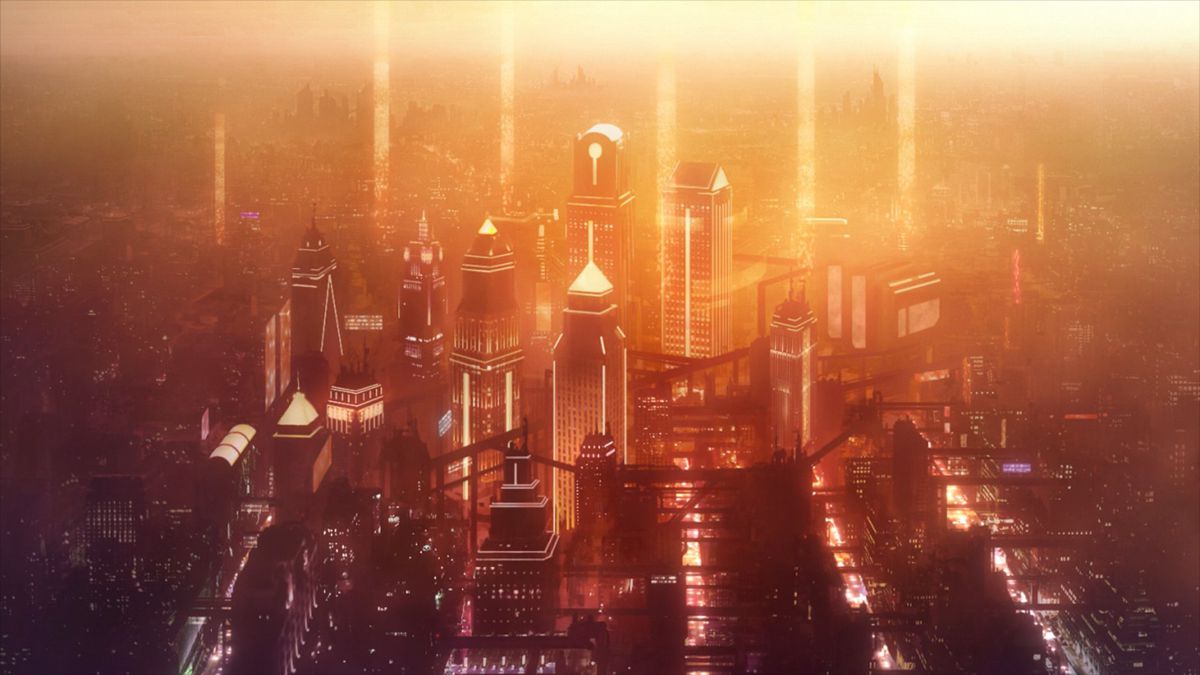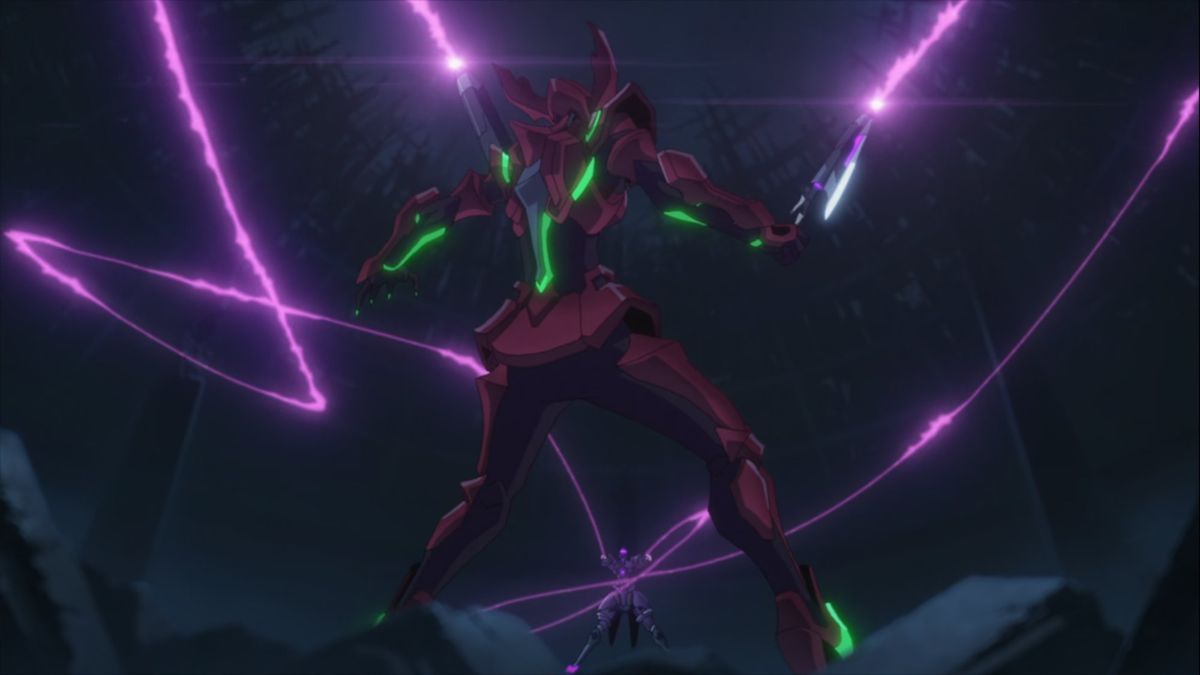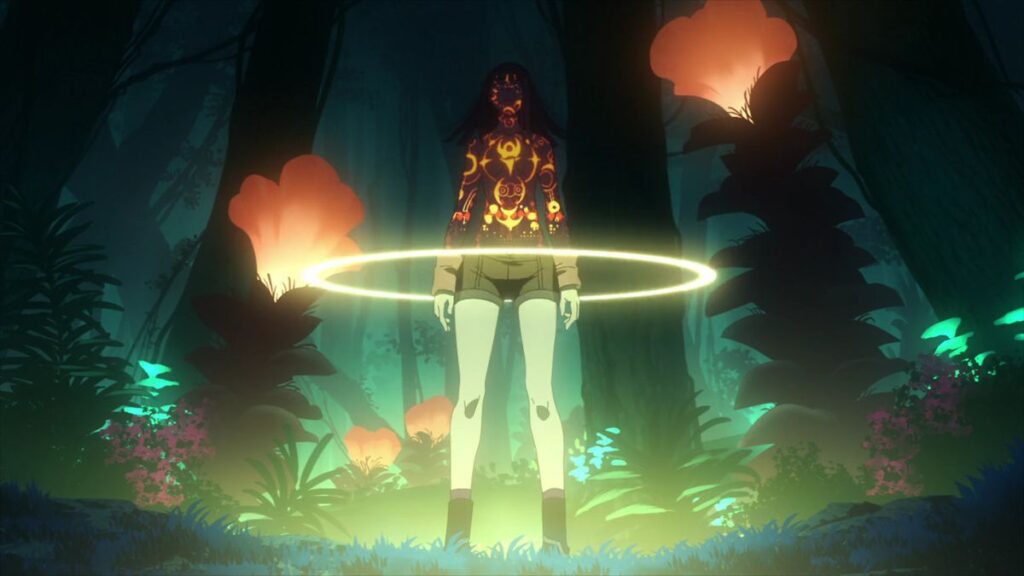Metallic Rouge, the latest original anime from director Motonobu Hori (Carole & Tuesday) and studio Bones, is as difficult to describe as it is impressive to behold. A “tech noir” mystery thriller that combines a futuristic cyberpunk setting with tokusatsu-inspired action, the series burns as slow as it does bright, doling out its story and universe at a deliberate pace. It’s an anime that asks its audience to take stock of every dazzling detail on display as they attempt to grasp the totality of its whole.
This is not a mystery that’s going to hold your hand and tell you the who, what, and where of its various parts and key players in explicit terms. Rather, it’s one that invites the audience to inhabit this world alongside its characters as they work to understand who they are and why they are doing what they’re doing.
For that reason, it requires a few episodes to fully acclimate the viewer to the many connective threads of its larger narrative, which is why — three episodes in — I am more confident in recommending Metallic Rouge now than I was when it premiered earlier this month. It’s a lot to take in, but the experience so far has been more than worth it.
Image: Bones/Crunchyroll
[Ed. note: Minor spoilers for Metallic Rouge episodes 1 through 3.]
Metallic Rouge takes place in a future where humans have colonized Mars and live side by side with Neans, humanlike androids who serve humanity and are programmed to obey their every whim through a protocol known as the “Asimov Code,” based on Isaac Asimov’s Three Laws of Robotics.
Rouge Redstar, a Nean android who can pass as a human being, has been dispatched to Mars in order to root out and eliminate a terror network led by the “Immortal Nine.” The Nine are a group of Nean prototypes who do not adhere to the Asimov Code, and are suspected of plotting to overthrow Human-Nean society. Like the Immortal Nine, Rouge is able to act outside of the parameters of the Asimov Code, as well as transform into a superpowered “Gladiator” form capable of facing off with them in combat. With the aid of her partner Naomi Orthmann, an investigator assigned to assist her with the case, Rouge scours the surface of Mars in search of her targets, all while gaining a more nuanced firsthand experience of the social order she has sworn to protect.
That’s the basic premise, but there’s a lot of other details running in the background — such as the nature of Alethia, the organization that governs Human-Nean relations, led by Rouge’s “older brother,” Gene Junghardt. There’s Ash Stahl, an investigator from Earth sent to Mars to track down an elusive “red figure” suspected of murdering Roy Junghardt, Gene’s father and one of the creators of the Nean androids. And then there’s the question of the Immortal Nine themselves: Why have they chosen now to rebel against their masters? Are they being falsely implicated, and if so, for what purpose?

Image: Bones/Crunchyroll
Oh, yeah — did I also mention the Nean androids are based on alien technology, and were initially designed as weapons against an extraterrestrial threat in a war with humanity that’s currently in the midst of a decade-long armistice?
I know; that’s a lot of exposition to throw at an audience, and most other anime would attempt to breathlessly dole those expository details out in the first episode and just as quickly move on from them in the next. Thankfully, Metallic Rouge is not like most other anime. While the concept of a servant class of artificial beings bound by a behavioral code is anything but original in science fiction, Metallic Rouge is exceptional in the way it goes about organically weaving the specifics of its universe into the dialogue and plot beats of its story. The show doesn’t hand you the answers to all your burning questions outright, but trusts the audience enough to lay the pieces out in front of them — albeit not necessarily in order — and put the bigger picture together themselves.

Image: Bones/Crunchyroll
The result is a mystery series that emphasizes the visual details of its world-building, with a scrupulous amount of attention. The cityscapes of Mars are vast and moody, bathed in a dusty perpetual dusklight by day and a bustling gridlike pattern of turquoise and magenta by night. The character designs, courtesy of Toshihiro Kawamoto of Cowboy Bebop fame, are distinctive and well rendered, offering a glimpse into each of their personalities and dispositions before they’ve even so much as spoken a word on screen. The design of the Gladiator forms by Takayuki Takeya and Tamotsu Shinohara, both of whom are known for their work on the Kamen Rider franchise, are especially noteworthy both for their obvious nods to that series and for their legibility during the show’s frantic and explosive battle sequences.
All of this adds up to Metallic Rouge being a thoroughly entertaining and visually exhilarating (if at times overwhelming) anime that’s just now beginning to gesture toward its full potential three episodes in. What’s apparent from its production quality and writing is that even these early episodes are intended to be watched and rewatched, not only to parse the revelations of its larger mysteries, but to bask in the electrifying spectacle of its action and animation. It’s shaping up to be one of my favorite anime of the season — and I look forward to a rewarding rewatch in the future as well.
Metallic Rouge is streaming on Crunchyroll.

